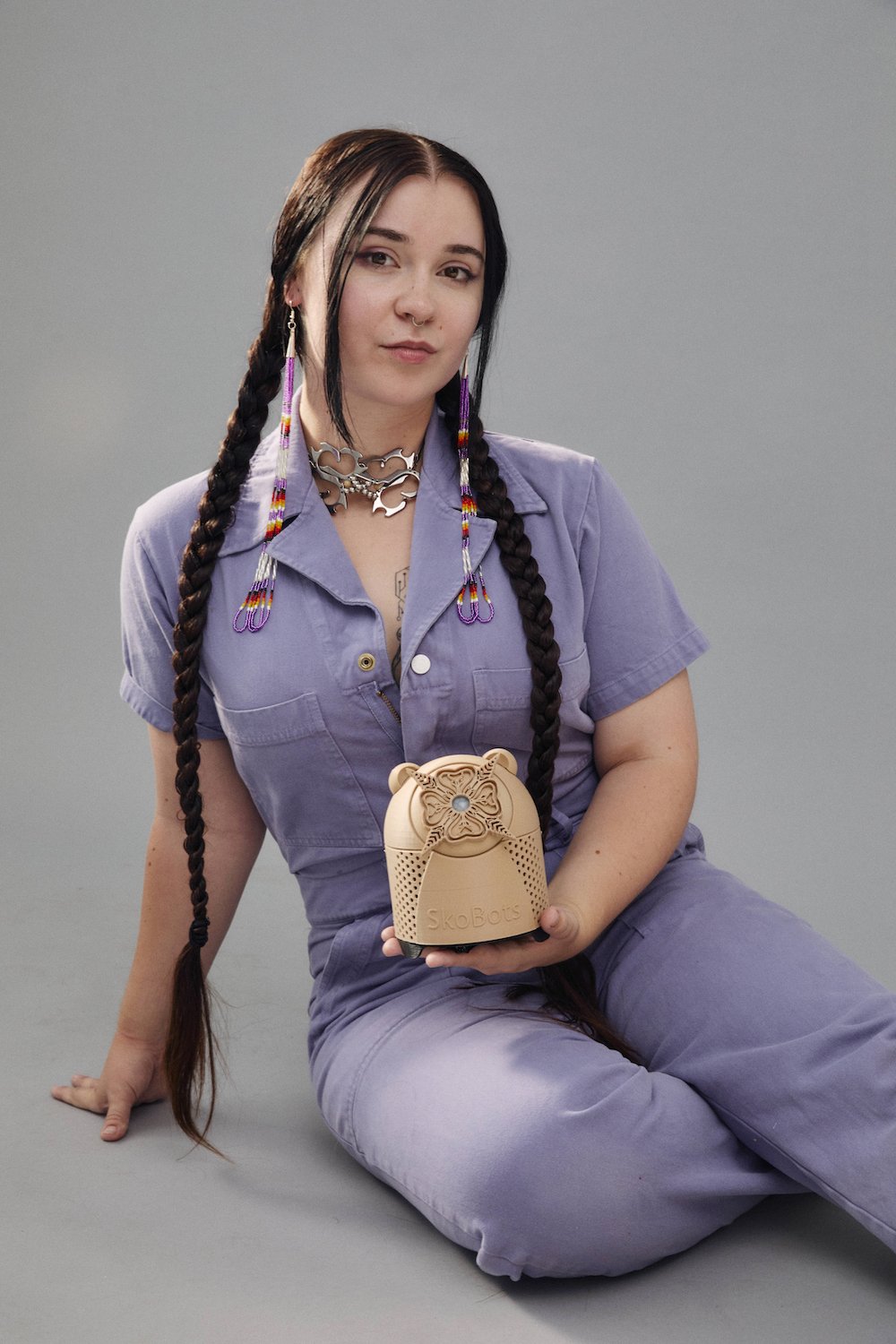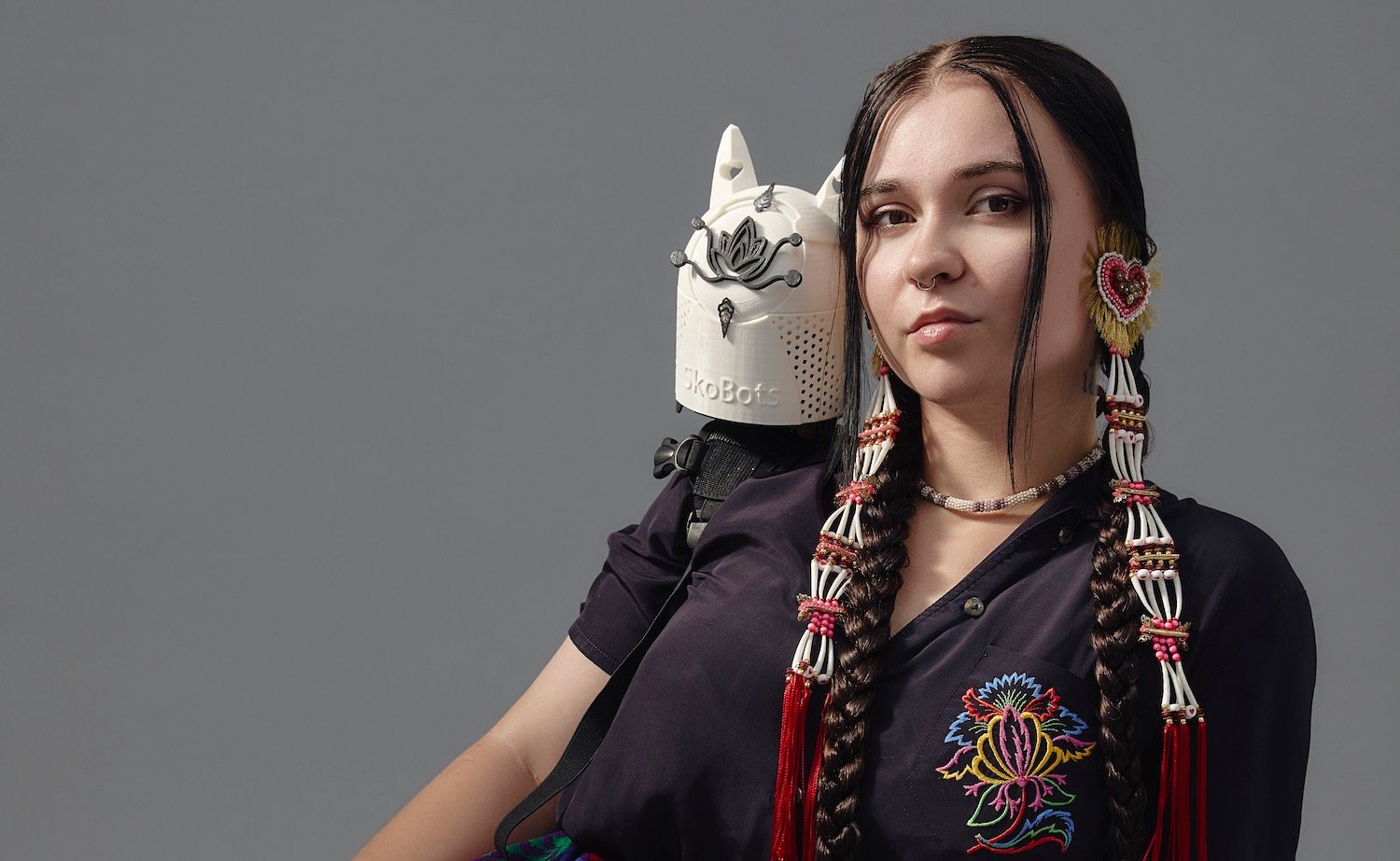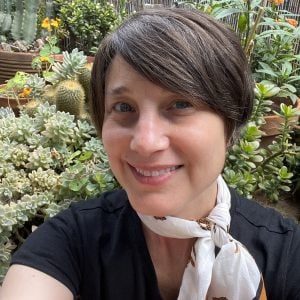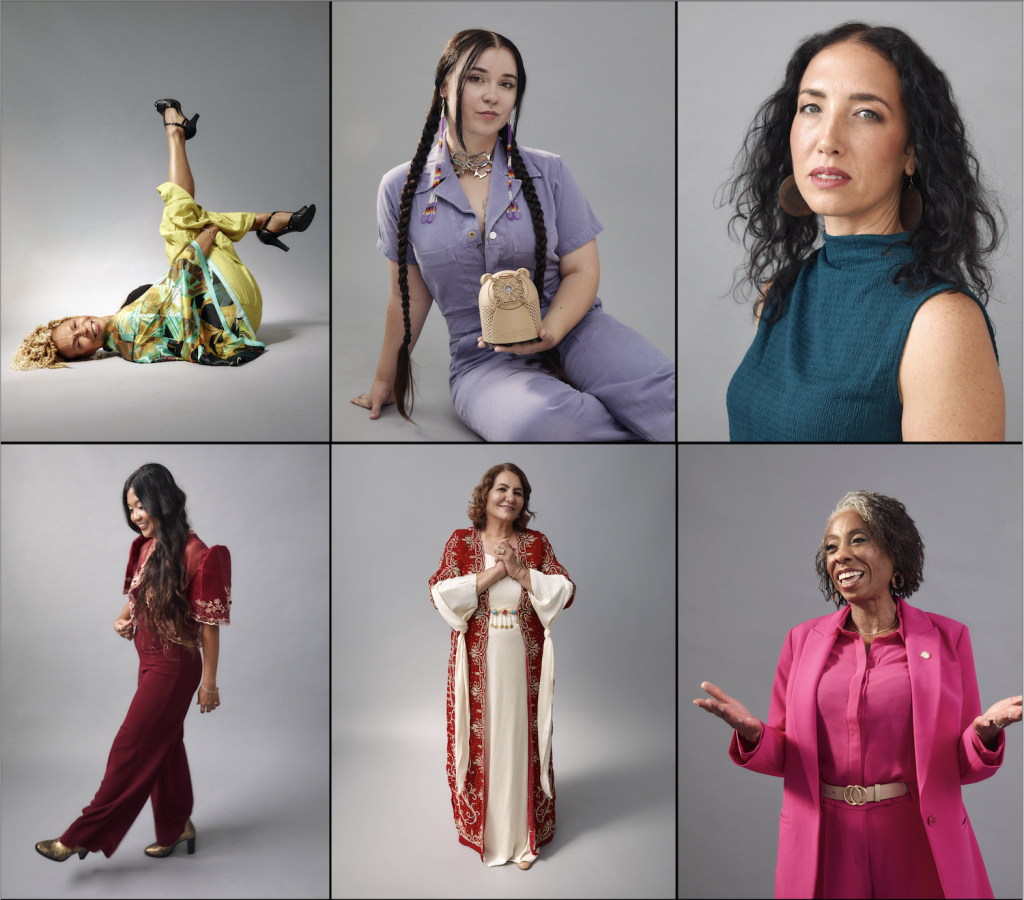“I didn’t think I was an inventor for years,” says robotics engineer Danielle Boyer. But the 23-year-old Ojibwe creator embodied the title long before she embraced it—she designed her first robot at 17. That initial prototype became EKGAR (which stands for “Every Kid Gets a Robot”), a $20 remote-control car kit that teaches Indigenous students technical skills. She 3D prints them from recycled plastic in her home studio and has shipped more than 11,000 at no cost to recipients.
“Equitable access to tech education is vital for Indigenous students to make sure we don’t get left behind,” she says.
Boyer’s second robot, SkoBot, is her baby, born to help teach the endangered Ojibwe language, Anishinaabemowin, and other Indigenous languages. SkoBots are about 10 inches tall, wearable, and pretty freakin’ cute. The latest generation includes a makwa (bear) and a waabooz (rabbit) designed in collaboration with an Ojibwe tattoo artist from Boyer’s home state of Michigan. “Kids love them; kids relate to them,” Boyer says.
SkoBots sense motion and say “boozhoo” (hello) and other phrases in response. Boyer’s nonprofit, STEAM Connection, provides the kits for free, and students build the SkoBots themselves. Boyer is currently recording more words in the voices of Ojibwe children and elders (including her grandmother) to expand the robots’ repertoire.
Boyer takes her robots on the road to demonstrate technology as a tool to communicate, advocate, and relate while imparting hands-on engineering skills. But, she says, she hasn’t always felt welcome in STEM.

During her childhood in a tribal community in Sault Ste. Marie, MI, it took Boyer two years to save $800 to join the public high school’s robotics club. She was the only girl and the only Indigenous student.
“People in my community experience financial and other inequities in education, and that was a barrier to my own STEM education,” she recalls. “And then there’s the troubling energy around women in STEM. Even my own dad said women weren’t meant to be engineers.”
So, she’s here to prove that Indigenous women do belong in STEM—and wherever they choose to showcase their talents and make their voices heard.
Boyer has already racked up an impressive list of accomplishments: She was part of the White House Tribal Youth Forum and received the Echoing Green Fellowship and Robert Wood Johnson Foundation prize. She moved to San Diego three years ago and travels frequently. With trips to Poland, the UK, Ghana, and China coming up, she’ll show people all over the world how tech can help preserve cultural history for the next generation.
PARTNER CONTENT
“To be Indigenous is a protest and a constant advocating for the future of your community,” she says. “There’s a myth that Indigenous people exist only in the past. But we’re here now and we will be here in the future.”



















